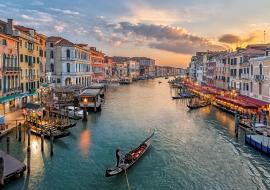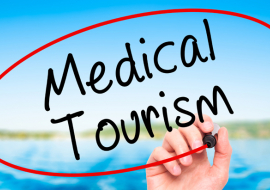Health & Wellness Tourism Register Steady Growth in the Caribbean, Latin America
Reports from multiple sources in the industry reveal that Health and wellness tourism is on track as predicted by the IDB to experience steady growth in the Caribbean and Latin America.
Research produced by the Inter-American Development Bank (IDB) reveals that health tourism, of which wellness is a $trillion dollar market, as delineated by economist Paul Zane Pilzer, has a competitive advantage in the Caribbean.
Investment, educational and networking forums held respectively in 2006 and 2007 (Private Investment Opportunities in the Caribbean Health and Wellness Sector and Conference on the Caribbean/2020 Vision) set the stage for five countries (Jamaica, Barbados, Trinidad & Tobago, The Bahamas & Guyana) in the Caribbean to begin to develop the infrastructure to benefit from health & wellness tourism.
At the 2006 investment conference, Ciro de Falco, Executive Vice President of the IDB in his opening remarks said the IDB is committed to fostering social and economic development in the Caribbean and has the facility to lend up to 10 percent of its outstanding balance directly to the private sector.
He further opened the way for serious dialogue by sharing the goal of the conference, which was to listen to the needs of the wellness sector in the Caribbean, grow the private sector role, develop the right enabling environment, while helping to develop qualified healthcare professionals.
Developments in the region are attracting health tourism experts far and wide due to the work of Positive Tourism Limited, founded by Theo Chambers and Sharon Parris-Chambers. The Company produces the annual Caribbean Health Tourism & Spa Conference founded in 2004 in Kingston, Jamaica, with the objective of establishing Jamaica as the wellness capital of Jamaica and the wider Caribbean.
In the Caribbean, the Cuban economy has benefited greatly from the promotion of health tourism. Revenues generated from the industry are around $40 million a year. The government’s strong efforts to increase economic growth through private healthcare seem to be paying off, with numbers of medical tourists flocking to the island increasing by 20 percent per year.
The key to Cuba’s success is Medical Tourism; this has been exemplified through the initiatives of the Ministry of Health, which firmly believed that preventative medicine rather than reactive medicine would not only enhance the health of Cuban population but also maintain the health of the system itself.
It is believed that with the global rise in healthcare costs, Medical Tourism will become Cuba’s most important growth industry by providing the world a safe, effective and affordable healthcare alternative.
Cuba is the established leader offering specialty services such as major treatments that attract more European and American clients than any other in Cuba, retinitis pigmentosa, or night blindness; neurological disorders like multiple sclerosis and Parkinson’s disease, and for orthopedic treatment; with cosmetic surgery and drug and alcohol rehabilitation becoming increasingly popular.
Following Cuba are Costa Rica, Jamaica and Barbados. Barbados has recently signed with Choice Medical Associates out of Canada to establish sought after medical treatments. Costa Rica is noted for the following services such as: cosmetic and plastic surgery, bariatric surgery, orthopedics, dentistry, ophthalmology and dermatology. In Latin American, Venezuela and Brazil offer various cosmetic surgeries, with Brazil offering the highly sought after Lasic eye and varicose vein surgeries.














